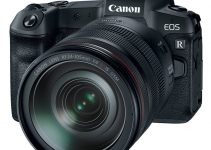Composition is a rather neglected aspect of film production, especially by newbie filmmakers. How you compose your shot, from what’s in the foreground and background to the colors of the overall scene and the smallest details in between, can drastically separate footage from an amateur and that of a professional.
The point of composition is to tailor your shot in a way that it directs the audience’s attention to wherever you need them to look, whether it be a moving subject or a piece of text on a blank paper. By paying attention to what’s inside your shot (foreground, background, color, movement, etc.), the elements in the scene work together to get important points across. To put things into perspective, this TravelFeels’ video provides five guidelines on how to use composition to make your shots feel more cinematic.
One compositional technique to consider is the Rule of Thirds, which is when you divide your frame into nine quadrants by two imaginary horizontal and two vertical lines. The general rule is that you should position your subject wherever the lines intersect in your frame as a guideline. You will typically find an actual visual representation of the Rule of Thirds in most professional cameras and even on some prosumer ones.
In addition to the Rule of Thirds, another compositional technique is the use of Leading Lines. From walls to railroad tracks, leading lines are exactly what they sound like – lines that lead the audience to your subject. You could either have the subject at the end of the line in your shot or have them/it intersecting this particular section of your frame. That way your lines are always leading to your main point of focus. While the concept may be simple, leading lines are very effective because no matter how busy your shot may seem, they will always act as a way to bring the audience’s attention back to the subject.
Leading lines can also allow you to gauge the depth in your shot. As a good rule of thumb, it’s more cinematic to have greater depth in your shots by keeping your actor away from a flat wall. For a setup such as an interview, rather than having the talent sit against a wall, have them move away to the center of the room. This way, you’ll create more depth in the scene and as a bonus, have more distinguishable shallow depth-of-field effect.
A common yet under-utilized technique to make shots seem more cinematic is the use of frames, wherein the subject is somewhat locked between the foreground, background, and/or sides of a frame (such as rails, door frames, etc.). The reason why this is deemed as cinematic is due to certain psychological factors as our brain wants to see what’s inside the frame, therefore drawing our attention. By creating this ‘frame’ in your shot, you direct the audience to look exactly where you want them to look – at the subject, provoking curiosity and tension with the viewers.
Lastly, try playing around with the symmetry of your scene. While the latter doesn’t quite point to anything as obvious as a leading line, having your subject symmetrically centered in the frame immerses the audience almost immediately. In fact, you could even break symmetry to evoke a sense of tension or unease.
All in all, it’s important to remember that everything discussed here is just a guideline. Film is not set in stone, and there is no official handbook on how to make movies. Make sure to keep experimenting with compositional techniques to discover ways to gradually improve your shots over time.
[source: TravelFeels]
Disclaimer: As an Amazon Associate partner and participant in B&H and Adorama Affiliate programmes, we earn a small comission from each purchase made through the affiliate links listed above at no additional cost to you.
Claim your copy of DAVINCI RESOLVE - SIMPLIFIED COURSE with 50% off! Get Instant Access!





